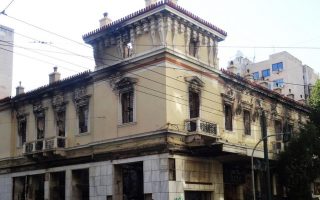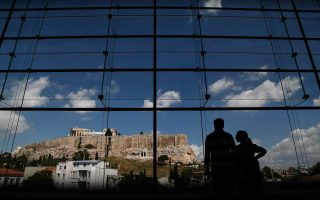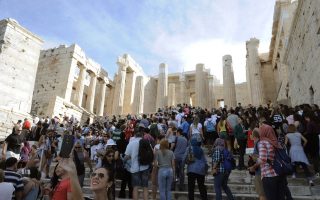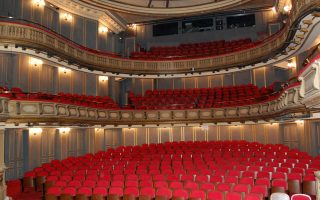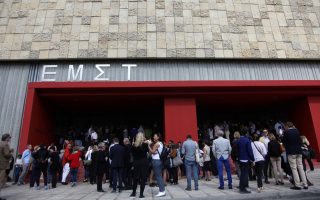The lion and the crucifix
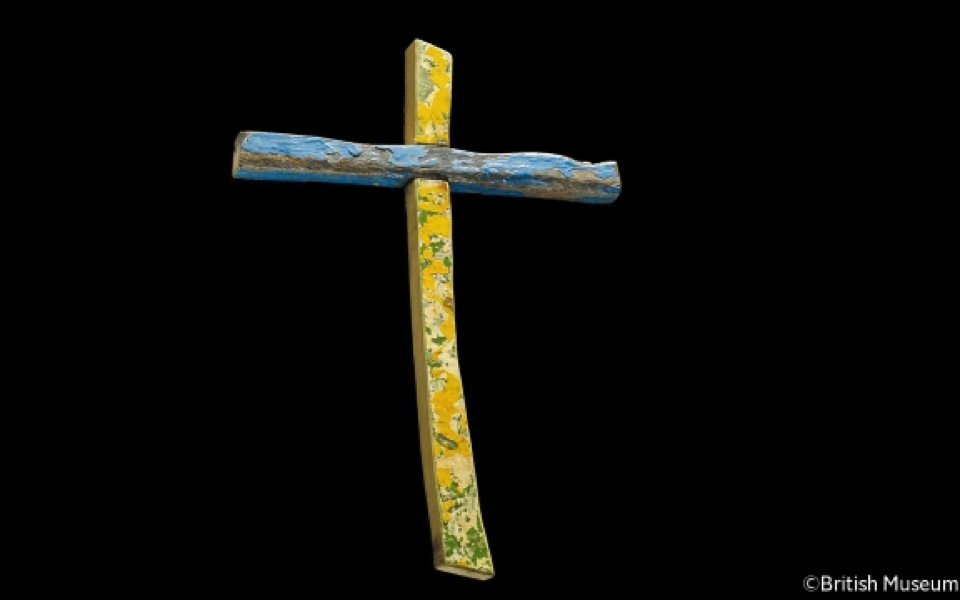
Some 40,000 years ago, a man or a woman, or a group of people, whose names, faces and language we will never know, selected ivory from a mammoth and spent many, many hours in the cold days and long nights of the last ice age in what today is southern Germany, probably next to a fire in a cave, carving a sacred object – an idol which combines the head and shoulders of a lion with the lower body of a man. The statue (which is 31 centimeters high), took some 400 hours of work to sculpt with the implements of the time. In an age when survival was the primary concern of every human, the Lion Man demanded precious reserves of time, energy and thought. It demanded the support of a group. It is the first object that we possess which does not reflect something that exists in nature. It was created for a serious purpose, not to pass the time.
A few years ago, in October 2013, a carpenter on the sunlit isle of Lampedusa, between Libya and Italy, was shaken by the deaths of some 300 people who drowned on what they hoped would be a journey toward a better life. He took wood from the wreck that had transported them to their deaths and fashioned a simple cross. He wanted to honor – to mark the existence and passing – of many Eritrean and Somali Christians among the victims and survivors. The wood from the vessel that betrayed them, like the cross at Calvary, became a symbol of life in the face of death. Like our ancestors who created the Lion Man, the carpenter Francesco Tuccio was responding to our need to ease our sense of awe at the unknown, to put some distance between ourselves and our fear and the dangers that we face, to communicate with something deeper and not just recreate a symbol. He wanted to communicate both with the drowned hundreds and with the unknown living who would see the cross and understand what it meant.
Our need to create icons, masks, items and symbols, the effort to recreate something that we see or to give shape to what we imagine, is deeply rooted in us humans. It is a sign of respect, an act of devotion, and effort to mediate between the unknown and ourselves. People who were continually threatened with violent death by lions in their caves may have hoped that if they “united” the inscrutable enemy with the familiar figure of a human they would gain something of his power, they might lessen his fury, they might have something that promised hope or protection where before there had been only fear. In our age, few are threatened by wild animals. But violence, poverty, the sea, illness, the implacable mystery of each death, provoke the same questions and the same fears. Symbols are our attempt – our humble flesh reshaping materials – to come to terms with the intangible, the invisible, whether it be our fear, our love, our hope. This need flows through all the ages of humanity, it connects everyone who has lived in an endless search for understanding and refuge in a world where the more we learn the more the truth eludes us. We cannot even know whether we are asking the right questions.
And the gods – whether we believe in the divine in general or one true God – are our attempt to communicate with something beyond the bounds of our senses, an effort to manage the absolute desolation of creatures who know only that they will die. If we are not threatened by cave lions, we will be hunted down by violence, by the betrayal of our own flesh, by the black sea and the endless dark of the universe. We fill our lives with awe of the divine, with saintly mediators, with bright examples of holiness and charismatic leaders – religious and political. We organize ourselves in religions and the planet is abuzz with rituals, prayers and conflicts. Hearts, homes, shrines, cities, whole nations fill with symbols and hopes – and with rage when the religion expands or appears threatened. We fashion objects, theories and procedures to organize our feeling that there are things beyond the world presented by our senses, and we dive deep into those senses to seek them out. Even the denial of anything beyond is a negotiation with the unknown, a question left dangling.
Traces of this endless ferment are present in the exhibition “Living with Gods: Peoples, Places and Worlds Beyond” at the British Museum. Under the inspired curation of Jill Cook, it begins with the inconceivable beauty and importance of the Lion Man and ends with a graphic installation from 1970, a simple, anti-art sign by an American artist, Robert Barry, titled “It is wholly indeterminate.”
The exhibition includes objects of worship, ritual dress and masks, everyday items and utensils, from all ages and many religions from across the world. The objects and their relationship with the elements and human senses are at the center of the exhibition – not the structures or theories of the religions themselves. Much seems common to all and much seems very different. From creations priceless for their historical and artistic value to humble industrial products made in the service of religions or politics (such as a good luck charm with Chairman Mao’s portrait, or a plastic model of the Virgin of Guadalupe), everywhere we see the human need to explain, to understand, to negotiate with the world we live in.
In the penultimate display, the white vests of two unnamed infants who drowned off Lesvos in 2015 are suspended in the air like washing, like ghosts, like tombstones. The vests, which have been dipped in plaster, bear descriptions of the two and the dates of their death, in Greek and Arabic. Installing the vests with the Lampedusa Cross and with a flotilla of little boats fashioned out of recycled bicycle mudguards, each carrying a cargo of burnt matches, Syrian-born artist Issam Kourbaj strikes the viewer in the heart. With simple actions of his hands, his mind has forged together time, space and emotions, transcending his humble materials. He links the fears, the desires, the pain of us all and creates a deep sense of compassion, of passion, of human communion in the lonely passage of the lost.
The exhibition “Living with Gods: Peoples, Places and Worlds Beyond” ends its run at the British Museum this Sunday, April 8.
